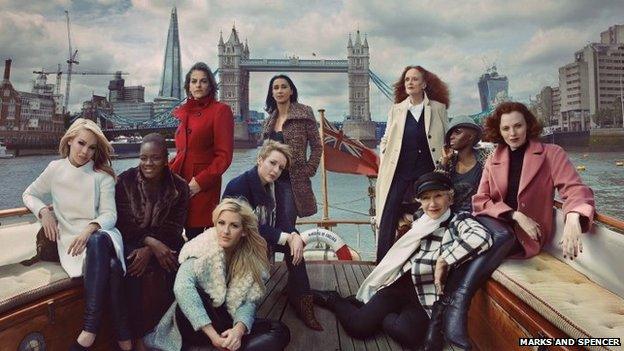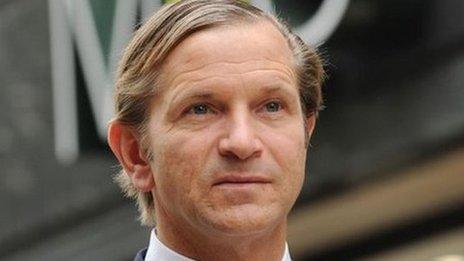Marks and Spencer: Views on how to get retailer back to No 1
- Published

It's the third year in a row that profits have fallen at Marks and Spencer.
The latest profit figure (£623m) puts the 130-year-old High Street stalwart behind 32-year-old upstart Next (£695m) for the first time.
This poor showing is largely blamed on weak "general merchandise" sales - essentially clothing - which fell 1.4% in the year to 29 March.
What's the way to fix it? We ask four experts.

Stock third-party brands
M&S is a nice environment, but it feels more akin to Primark. It has a very good but basic shop fit, but it doesn't turn people on. Customers want excitement and glamour.
For a long time it has traded its own brand only, but it's a new world and if it wants to be a department store for clothing it needs to think seriously about whether it should bring in third-party brands.
It could either get this designed exclusively for it, or simply sell their clothes in its stores.
Its customers spend a fortune at Hobbs and Jigsaw - why are they not buying such clothes at M&S?
It also needs to be much more segmented in its approach. While it has sub brands, they are not clear enough in the store and everything merges into one.
Neil Saunders, managing director of retail research firm Conlumino

Attract those over 55-year-olds
M&S is suffering an identity crisis. It is not clear what it stands for.
It's not appealing to their core customer. More than half of its sales come from shoppers over the age of 55 - they tend to be more conservative and traditional in style. And they are probably not looking for kimono jackets and crop trousers.
M&S is trying too hard to compete with fast fashion chains on the High Street and appeal to a younger audience. This is alienating its older audience, which is really dangerous.
It should just focus on classic, basic items: wardrobe essentials such as cardigans, T-shirts, bras, socks and underwear - in a variety of colours and designs.
It also needs to get its pricing balance right. Its new ranges launched with Belinda Earl [style director] are more expensive and that's another danger, especially when they're pretty much permanently on promotion.
Natalie Berg, retail analyst at Planet Retail

Do more food
The problem it faces is that its core market is increasingly not being seen as clothing but as food.
It is perceived more as a premium food retailer. So in the UK it should manage a greater switch to food in terms of priority.
It's going down that route by opening up smaller convenience food stores. But I think it should have more dedicated food outlets - offering convenience foods and lunchtime sandwiches.
And in its larger stores, it should change its food offering in a way to appeal to people who want something quick and easy.
The emergence of fast fashion has undermined its clothing offering, but it is planning to expand internationally where its clothing brand is relatively strong.
It needs to effectively manage this crossover, by making its clothing more up to date and more modern, to try to reinvigorate the brand.
Jon Copestake, chief retail analyst at the Economist Intelligence Unit

Merge with Next
Neither my wife or my two daughters would be seen dead in M&S clothing.
It's barking mad, but if you merged M&S with Next, then you would have online, top fashion, top grub and a top brand.
I think Marc Bolland [M&S chief executive] should go, and Lord Wolfson [chief executive] of Next should give it a shout.
M&S's current strategy is just papering over the cracks. Its problem is that its fashion is dowdy and it has no chance of switching that.
Its rivals such as Primark and Topshop are all cheaper and more fashion conscious.
David Buik, market commentator at Panmure Gordon.
- Published20 May 2014

- Published20 May 2014
